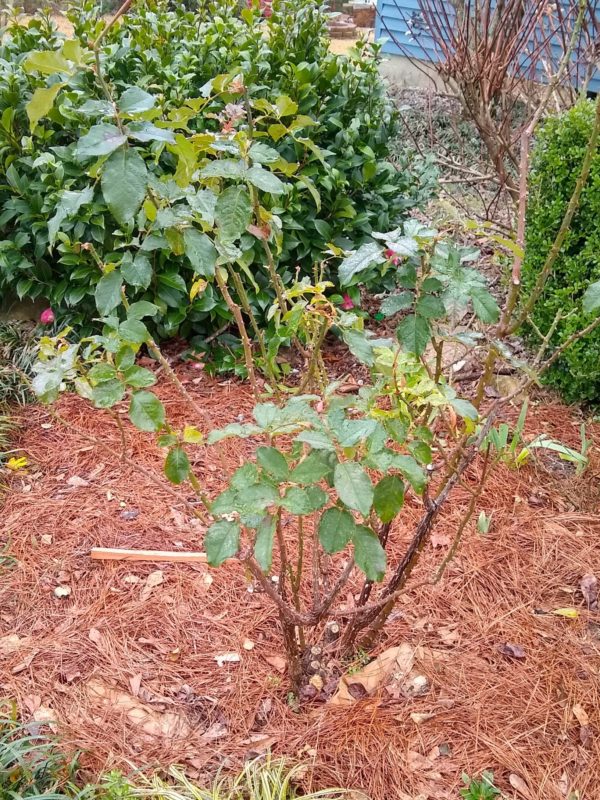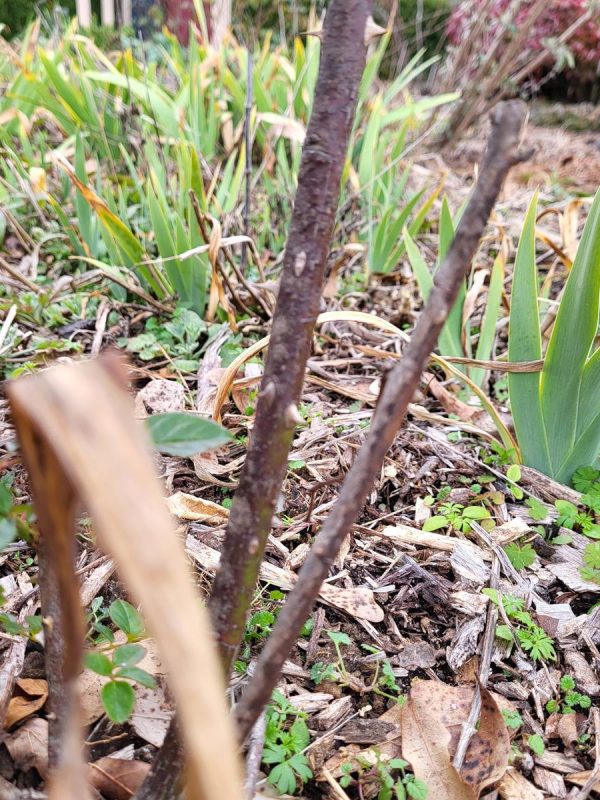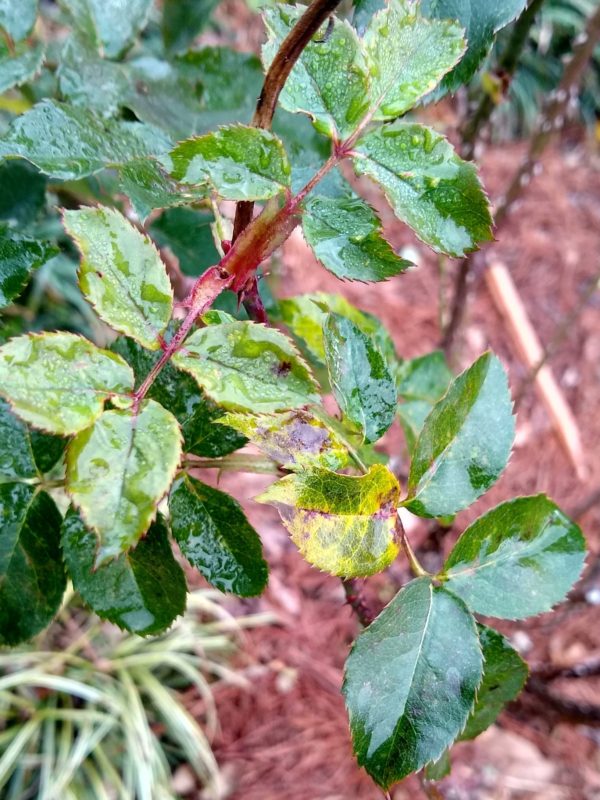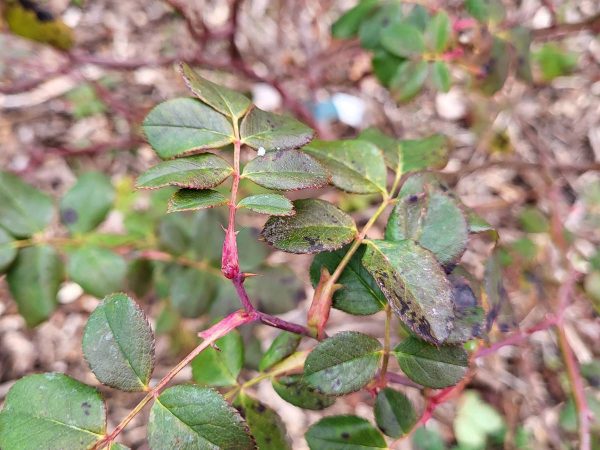
I first wrote this post several years ago and I was a bit chagrined to discover and read it. Things change! I don’t hold to any of the advice that I so sagely proposed. Forgive me. I’m a novice, wading through a sea of gardening books and a flurry of household activity. Allow me to try again.
Roses in January: 2025
Rose care is a mystery to me. As I look at my shaggy, black-spot ridden roses of January, my fingers itch to get the show started! Problem is that the experts give varying advice.
In my first edition of this post, I passed on the advice that one should defoliate roses in the dormant month of January. A rose expert told me to do it! He said that taking the leaves off the roses would help them truly go into dormancy and thus get the rest they need. Look at how many leaves are on the rose below! You, Northerners, may be surprised by this phenomenon, but, here in Georgia, it’s a common sight. The roses aren’t putting forth any new growth, but the neither are they shaking off the old. Unless you are committing to drastically pruning the whole shrub, which I wasn’t, you would have to meticulously remove each leaf one by one…which I did.

.
A Second Opinion
Probably simultaneously to my posting my “take the leaves off the rose” advice, I emailed a local garden expert asking if this was really a necessary step. He responded several months later with a post on his website, assuring the anonymous writer, me, that it is not necessary to remove all the leaves from your dormant roses. Rest easy. I did. No more leaf-plucking.
What Can I Do in January?
Sometimes I have time to ask that question, and to ask it specifically about my roses. I want bigger, brighter bushes in the summer. What can I do about that now.
First, let it be said: Don’t ask me. Ask some local gardening expert. Second, be aware that local experts may have different opinions. I’m getting the sense that roses are actually quite resilient. Take the advice you can follow. Mix it up through the years as seems fitting for your garden.
Next, if you want my advice…. I like to spray my roses with dormant oil in January or early February. Look at the picture below. You’ll see black and yellow spots on my rose bush’s leaves. That’s black spot, a bothersome fungus which causes a rose’s leaves to yellow and then fall to the ground. This is one of the rose problems which can be curbed with dormant horticultural oil. Another pest I have encountered are rose scale. The rose scale on my roses doesn’t look exactly like the rose scale in books or in the web. Different lighting maybe? One rose expert said to use dormant horticultural oil to stifle the scale. I sprayed my roses with the oil last year and the scale seemed to be lessened. It looks pretty bad again.

You can also rake up any fallen leaves from the ground, thereby removing nasty blackspot spores, and lay down organic material and new mulch. Winter pruning is also a January option…according to some rose experts. Ha. I’ve seen some advice for my area say to prune your roses in January and some recommend February. I’m beginning to guess that it doesn’t matter too greatly which of the two months you chose. I’ll do it when I have time.

There you have it! Hope for the gardener aching to get out into the garden in those brutally cold winter months! If weather permits, you can lay out new compost/manure/mulch underneath, spray, and prune your roses. If the cold is too brisk for you, but you can’t get your mind off roses, you might try comparing gardening advice. It can be diverting.
Usually, Georgia isn’t that cold, but this year is an exception. I have a closing picture to prove it. The weather may be too cold for me to rake and spray, but not too cold for a photo or two. 🙂 There’s a tiny little snowflake on one of those rose leaves! Woohoo! Record cold for GA.
